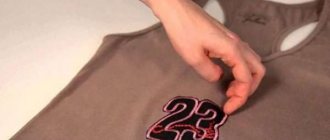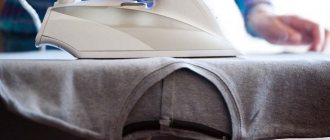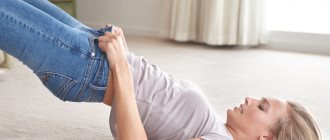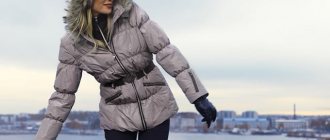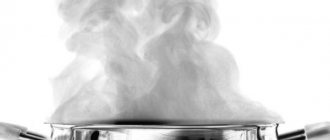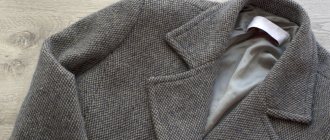Some people find ironing difficult because they don't follow the basic rules. Burnt fabric, unsmoothed folds and creases, broken or torn buttons after dry cleaning, do you recognize yourself?
Then this article is for you. The first thing to keep in mind is that the composition of the fabric determines the way in which it should be ironed.
Combinations on your iron will help you achieve your ideal heat setting. Secondly, you need to use an ironing board to iron your clothes.
In addition, clothes should be ironed so that wrinkles are removed and new ones are not formed. Below are tips on how to iron a shirt using the correct technique.
How to iron a shirt correctly
Proper ironing of men's shirts is performed in the following sequence:
- The ironing process begins with the collar because it is the most visible part, especially when worn with a suit. To iron the collar, you need to unscrew it and start from the bottom, and then, slowly pressing the iron, move it from the corners to the center. The next thing to do is to turn the shirt over and repeat the process on the other side of the collar;
- Cuffs, when worn with a suit, are the second visible part of the shirt and require a lot of attention. Just like the collar, they are ironed on the inside first, then turned over and ironed on the outside. When ironing cuffs, you need to be careful not to iron over the buttons;
- the front of the shirt. Ironing the front should begin from the side on which the buttons are located, gently pressing the iron around the buttons;
- back. To properly iron the back of a shirt, you need to place the back of it on the ironing board so that one shoulder is placed on the tapered edge of the ironing board, this helps keep the back in the desired position for ironing. The same should be done by changing the sleeve and ironing the second part of the back;
- sleeves The sleeves are the most difficult part of ironing a shirt. The problem with sleeves is that without a special board with a cutout for the sleeves, you will have to iron two layers, so you need to be careful and make sure that the fabric lies flat.
Basic recommendations
Before you start ironing, be sure to study the recommendations on the product label . An iron icon with one circle inside means that the fabric needs to be processed at a minimum temperature, two circles correspond to the average temperature, and three circles correspond to the maximum.
Remember that when ironing silk or synthetic items, it is recommended to refrain from using steam and use the most delicate setting. It is best to turn the shirt inside out and only then begin processing. The same applies to any dark fabric, on which shiny marks may appear on the front side when ironed.
You can purchase clothes from famous brands at low prices in the online store https://barbaru.ru/
Cotton clothing can be exposed to high temperatures and even steam shock. Linen fabric can be ironed at maximum speed and steam can also be used.
You can always find ironing recommendations on the labels
Experts do not recommend drying clothes with an iron - this causes significant stress to the fabric fibers and is damaged. Therefore, it is better to dry the shirt before ironing or leave it slightly damp. You can always wet the fabric using a water spray or selecting the steam mode.
Of course, the most convenient way to use an iron is on a special ironing board. Large boards often come with miniature ones, which are convenient to use for ironing long sleeves without creases.
To spend less time ironing, you need to make sure that the shirt does not wrinkle during drying. It’s best to hang your clothes on hangers after washing, so you don’t have to think about how to deal with creases.
Ironing modes for shirts by fabric type
Cotton shirts
Cotton items should be ironed slightly damp, and the part being ironed should be sprayed with water. You need to work the iron longitudinally, and not in a circular motion, so as not to damage the material.
- A 100% cotton shirt will require a temperature in the range of 130-160 degrees with strong pressure and wet steam;
- from pressed cotton - 110°C and without moisture;
- a cotton item with linen will require a temperature of 200°C and wet gauze with strong pressure;
- For synthetic cotton, 100°C with low steam will be enough.
Made from polyester
These definitely require the use of gauze or a thin cotton cloth to avoid the soleplate of the iron coming into contact with the fabric because polyester is an extremely heat sensitive material.
You need to iron such a thing at a temperature of no more than 80 degrees with light pressure to avoid melting the fibers and using weak steam.
Linen shirts
For high-quality ironing of a linen shirt, it is recommended to heat the iron to a temperature of 200°C with intense moisture, fairly strong pressure and jet steaming.
Chiffon and silk shirts are ironed at a temperature of no more than 70°C without moisture or steam.
Viscose and knitwear - 120 and 80°C, respectively, using gauze and low steam. Items made from these materials should be ironed from the inside out.
For thicker fabrics, ironing both sides of the fabric will give the best results, and you can also check the product label for what temperature to iron your shirt at.
If there is no label, you can determine the temperature yourself by setting the minimum temperature and increasing it until the wrinkles begin to smooth out.
Dark-colored items, regardless of material, should always be ironed inside out to avoid shine caused by the iron.
Tips for using a steamer
- Use the device only on sealed surfaces that can withstand high temperatures.
- For colored clothing, test an area of the fabric before steaming to ensure it does not fade when exposed to steam.
- It is important to be careful not to get burned by the steam.
- Allow clothes to hang and dry a little after steaming before putting them away in a closet or wearing them. If you don't do this, the wet fabric will instantly wrinkle.
- Author: Maria Minaeva
Preparing the shirt for ironing
- The shirt should be ironed only after washing, as some dirt after ironing the item will forever remain in the fabric;
- if your washing machine has an “easy ironing” function, then use it;
- There is no need to wait for the item to dry completely, let it be slightly damp. If you decide to iron a dry shirt, it is better to moisten it with a spray bottle and briefly (for about 10 minutes) place it in a bag or wrap it in a towel, this will help it to be moistened equally throughout the entire fabric;
- read the information about the shirt on the label and adhere to the specified temperature regime that is necessary for the material;
- On the collars of men's shirts there are plastic bones in small pockets, the so-called retainers, they need to be removed before ironing, but it is better to do this before washing.
Features of ironing 100% cotton
Cotton fabrics are easy to care for and can withstand regular washing and ironing. The best result of smoothing the material is achieved when processing fabric that is not completely dry.
In the case when the product is completely dry after washing, you can moisten it with a spray bottle and let it lie rolled up for about 15 minutes.
There are several ways to iron a cotton shirt :
- pre-moistening the product;
- through a damp cloth, which is placed between the laid out product with the heated sole of the iron;
- using the steam function in the iron;
- using the iron's water spray function;
- using other devices instead of an iron - a steam generator or steamer.
Cotton fabric tolerates moisture and ironing well in the “cotton” mode.
There is no difference between ironing a men's and a women's classic cotton shirt. The exception is additional decorative elements on some women's products, which will require separate processing.
How to iron a long and short sleeve shirt
The basic principle that should be followed is that small and double parts begin to be ironed first.
Using the following instructions, in the given sequence, you can perfectly iron a long-sleeved shirt and not leave wrinkles on the already ironed surface.
- Gate. Its fold does not need to be smoothed, it should be natural.
- Cuffs. First, the wrong side is smoothed, and then the front side.
- Sleeves. First of all, the seam is smoothed out, and then the sleeve itself.
- Shelves. You need to avoid folds on the pockets and carefully go around the buttons.
- Back. Move the shirt along the board to help iron the back from seam to seam.
Shirts with short sleeves are ironed in the same way, only a little faster. The sleeve must be pulled over the narrowed edge of the ironing board or onto a special sleeve holder and ironed on all sides.
How to iron a shirt collar correctly
It is advisable to iron the collar of a man's shirt while damp. You should start from the reverse side from the corners of the collar to the center.
The front side is also smoothed. You need to iron without pressing so that the fabric does not move to the sides, forming folds.
It is not recommended to iron it along the curve in a bent position; it should be natural and take its shape when the shirt is put on.
How to iron a shirt collar so that it stands up?
It depends on the fabric. If the material is of good density, it is enough to simply smooth it on both sides; if the fabric is soft, you can starch the collar with a solution, dry it and iron it in the desired shape.
Neat clothes without ironing
If you don’t want to waste time using an iron, you can use alternative ways to wear neat and ironed clothes. Knowing the composition of the fabric, you can estimate the degree of its wrinkleability.
Natural fabrics such as linen, natural silk, muslin, cambric are prone to the rapid appearance of untidy creases.
Clothing with synthetic fibers retains its shape longer and is easily smoothed out after washing if clothes made from it are dried on hangers or flattened on a flat surface.
Denim
Denim is a coarse, stiff, dense twill fabric that Levi Strauss used to sew the first classic jeans. They sew from it:
- trousers,
- shirts,
- jackets,
- dresses and other things
There are many reasons for their popularity, one of which is: you don't need to iron them! This is a dense material that is resistant to deformation and retains its shape.
Crash
This fabric has a small fold, with an initially wrinkled effect. It makes stunning shirts!
Ironing the sleeves
Shirt sleeves should be ironed without arrows. This is done like this:
- the sleeve is folded in half, seam up and it should be located in the middle;
- the seam is smoothed, the sleeve is turned over and also ironed;
- The sleeve is folded along the seam and ironed from it to the edge, starting from the shoulder and down.
Are arrows needed on sleeves?
Many have wondered: is it correct to iron shirt sleeves with or without arrows? According to etiquette, it is customary to wear a shirt without arrows.
But if a person does not plan to take off his jacket, arrows on the shirt are acceptable. It follows from this that arrows on the sleeves are in bad taste.
How to avoid arrows?
The easiest way to iron a shirt without creases is to use an ironing board sleeve.
If such an element is not available, you can get rid of creases on the sleeves of a shirt by using a soft towel rolled into a tight tube, simply replacing the sleeve with it.
In addition, you can iron a shirt without arrows using a steamer. You can read more about how to iron a shirt without wrinkles here.
Ironing the shelves and back
We place the shelf on the board, shoulder to the narrowed part. You need to start ironing the shelf from the front side. The spaces between the buttons are ironed from bottom to top.
The seam is ironed at the collar and further down. Place the shirt with the armhole side seam onto the board and iron.
Then you need to move the iron to the side seam and back. Lastly, the left shelf is ironed.
How to iron a shirt without an iron
Let's consider such tricks as the ability to iron a shirt without an iron.
Method number 1 - Wet hands
If the item is not too wrinkled, you can smooth out the wrinkles with damp hands by running your hands over the fabric from top to bottom. Then shake the shirt and let it dry. Linen products are well suited to this method.
Method No. 2 - Steam bath
Hang clothes on hangers in the bathroom and run hot water, close the bathroom door. The water must be so hot that steam is formed, since it is under the influence of steam that the unevenness disappears. The fabric will be smoothed in 15-20 minutes. Splashes of water should not fall on the item.
Method number 3 - Put it on yourself
Put a wet shirt on your body. The tension and body heat will smooth the fabric.
Method No. 4 - Leveling solution
A solution of vinegar and fabric softener is added to water 1:1:1. Shake the resulting solution and spray the surface of the clothing. Then dry it, preferably in the open air. The method does not work with synthetics.
Steam generator and steamer
You can tidy up a cotton shirt not only by using an iron. A steam generator and a household steamer also give a good effect.
| Device | Application procedure |
| Steamer | Loose cotton used for shirts lends itself well to steaming. A directed jet of hot steam easily removes wrinkles on a shirt placed vertically. |
| Steam generator | Steaming is carried out with a jet of steam. A cotton shirt will straighten out under such influence, no matter how wrinkled it is. |
Iron alternative
Among the unusual methods for removing wrinkles from things, the following can be noted:
Steam generator
This device is quite similar to an iron, but in terms of the specifics of its operation it differs in that it constantly supplies dry steam with a powerful jet. Capable of smoothing out fairly wrinkled items.
Steamer
The steamer removes wrinkles by supplying hot steam, and at the same time disinfects the item. You can iron in a vertical position. However, not all fabrics are suitable for this method.
Steam manken
An ironing robot, a mannequin, in the shape of a human torso, is designed for quick drying and smoothing of all clothes that are worn on the torso.
The better way to iron shirts, with a steam generator or a steamer, depends on the frequency and amount of poorly ironed (complex, unusual cut, decor on things) clothes. The first option is preferable.
Clothes steamer - should it replace an iron?
Strictly speaking, now people are increasingly buying irons with a vertical steam function, so you have a chance to combine these two irreplaceable devices. But perhaps it’s worth switching to steaming only and forgetting about the classic iron? Let's figure it out now.
Iron Redmond RI-C278
RUB 1,999
Buy
The steamer removes wrinkles from the fabric without coming into direct contact with it. This device uses hot steam to “relax” fibers in clothing.
Hang the shirt on a hanger, hold and straighten the shirt with one hand, and with the other, apply a stream of steam to the fabric a couple of centimeters from it.
Vertical steamer Mie Grande with ironing board
RUB 23,490
Buy
These units are ideal for soft and delicate fabrics such as silk, satin, wool, polyester and jersey. Additionally, it can be used on fabrics that are difficult to iron, such as a screen-printed shirt or jacket.
- Fashion How to properly update a man's wardrobe to look stylish: 6 basic rules It's high time to shake up your closet!
The device is also effective for smoothing out sleeves, folds and frills in clothes. Suits, sweaters, delicate fabrics, T-shirts, jackets and garments with folds also require steam to protect the fabric and the shape of the garment.
Runzel Handheld Steamer
RUB 4,490
Buy
The disadvantage of this device is that the folds cannot be pressed into the fabric. This means that the shirt will not look “brand new” - only an iron can give this effect.
Useful Tricks
- A man's shirt should be ironed right side out.
- If you cannot iron the item, moisturizing and pressing firmly on the iron will help.
- Fabric that is difficult to iron can be made more pliable with a solution of conditioner, water and starch.
- The print on the product or embroidery must be ironed from the inside.
- For easy and efficient ironing, shirts can be hung to dry by hanging them and ironed when damp.
- To avoid wrinkles on knitwear, it is better to store such products with a roller.
Don't forget to share the article with your friends and join us on social networks.
Some tips
- If you are unsure of the type of fabric the shirt is made from, always start ironing at a low temperature. You may spend a little more time ironing, but you won’t burn it.
- Always iron around the buttons, not over the buttons. Even if the buttons are under the fabric (if the shirt is turned inside out), still go around the buttons when ironing.
- You should not iron a dirty shirt if it has not been washed. If you iron stains on a shirt, it will be extremely difficult to wash the shirt, if at all.


